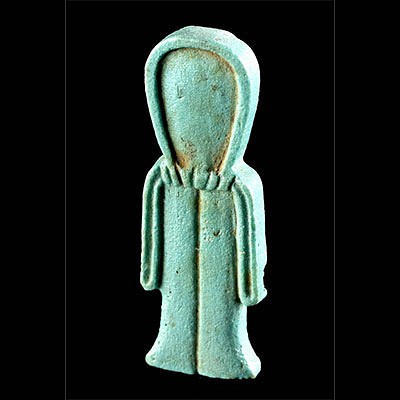19th C. Turkoman Gilt Silver, Brass & Carnelian Pendant
Lot 57d
About Seller
Artemis Gallery
686 S Taylor Ave, Ste 106
Louisville, CO 80027
United States
Selling antiquities, ancient and ethnographic art online since 1993, Artemis Gallery specializes in Classical Antiquities (Egyptian, Greek, Roman, Near Eastern), Asian, Pre-Columbian, African / Tribal / Oceanographic art. Our extensive inventory includes pottery, stone, metal, wood, glass and textil...Read more
Categories
Estimate:
$2,600 - $3,900
Absentee vs Live bid
Two ways to bid:
- Leave a max absentee bid and the platform will bid on your behalf up to your maximum bid during the live auction.
- Bid live during the auction and your bids will be submitted real-time to the auctioneer.
Bid Increments
| Price | Bid Increment |
|---|---|
| $0 | $25 |
| $300 | $50 |
| $1,000 | $100 |
| $2,000 | $250 |
| $5,000 | $500 |
| $10,000 | $1,000 |
| $20,000 | $2,500 |
| $50,000 | $5,000 |
| $100,000 | $10,000 |
| $200,000 | $20,000 |
About Auction
By Artemis Gallery
Nov 4, 2021
Set Reminder
2021-11-04 10:00:00
2021-11-04 10:00:00
America/New_York
Bidsquare
Bidsquare : Ancient & Ethnographic Art Through The Ages
https://www.bidsquare.com/auctions/artemis-gallery/ancient-ethnographic-art-through-the-ages-7799
Ancient art from Egypt, Greece, Italy and the Near East, as well as Asian, Fossils, Pre-Columbian, Native American, African / Tribal / Oceanic, Fine art, and much more! All categories, all price ranges... all legally acquired and guaranteed to be as described or your money back. Artemis Gallery info@artemisgallery.com
Ancient art from Egypt, Greece, Italy and the Near East, as well as Asian, Fossils, Pre-Columbian, Native American, African / Tribal / Oceanic, Fine art, and much more! All categories, all price ranges... all legally acquired and guaranteed to be as described or your money back. Artemis Gallery info@artemisgallery.com
- Lot Description
Central Asia, Uzbekistan, Afghanistan or Turkmenistan, Turkoman (Turkman), Karakalpaks or Tekke peoples, ca. 19th to early 20th century CE. A massive 50% silver, brass, and gilt pendant or pectoral plate worn by Turkmen woman. The piece is a rhomboid shape with openwork and incised geometric decoration across the surface. Two flanges protrude from the tips, and integral loops are added to the top and bottom for suspension and additional ornamentation. The central ovoid bezels hold 4 carnelian stones. Chain links attached to the lower loops dangle 20 teardrop shaped ornaments with a repousse pattern. This is a gorgeous and large ensemble that would be a stunning wall ornament. The piece is strung with a modern cord and lobster clasp. Size: 10.5" L x 8.5" W (26.7 cm x 21.6 cm); silver quality: 50%; weight: 354.3 grams
From the Metropolitan Museum of Art's website "Turkmen Jewelry" August 2011: "Although nominally Sunni Muslim, the Turkmen kept many of their pre-Islamic customs and beliefs, which were often embodied in the jewelry they made and wore. Turkmen silver jewelry carried deep symbolic meanings and often marked an individual's passage from one stage of life to another. From a very early age, a woman started wearing jewelry whose shapes and materials were believed to ensure her ability to bear healthy children later in life. The amount of embellishments a girl wore increased as she approached marriageable age. Once she had had her first children, and her fertility had been established, the amount of jewelry she received and wore decreased. In addition, silver jewelry believed to ward off evil and illness was worn by men, women, and especially by children.
Jewelry was a significant financial investment, as it was handcrafted from precious materials. There were cases when, in times of dire need, a woman would part with her jewelry in order to help the survival of the tribe. Significant in size and weight, Turkmen jewelry objects were made of silver, decorated with semi-precious stones, and sometimes gilded for an added color effect and value."
For a similar example please see the Metropolitan Museum of Art website accession number: 2010.501.5.
Provenance: private Southern California, USA collection, in the USA since 1997
All items legal to buy/sell under U.S. Statute covering cultural patrimony Code 2600, CHAPTER 14, and are guaranteed to be as described or your money back.
A Certificate of Authenticity will accompany all winning bids.
PLEASE NOTE: Due to recent increases of shipments being seized by Australian & German customs (even for items with pre-UNESCO provenance), we will no longer ship most antiquities and ancient Chinese art to Australia & Germany. For categories of items that are acceptable to ship to Australia or Germany, please contact us directly or work with your local customs brokerage firm.
Display stands not described as included/custom in the item description are for photography purposes only and will not be included with the item upon shipping.
#167297Some bending and mishappen chains. Indentations and surface scratches as expected with age and use. In great condition. Old inventory labels on verso. Strung on modern cord with a clasp, while potentially wearable, please note the size. This could be restrung or mounted as a wall ornament.Condition
- Shipping Info
-
All shipping is handled in-house for your convenience. Your invoice from Artemis Gallery will include shipping calculation instructions. If in doubt, please inquire BEFORE bidding for estimated shipping costs for individual items.
-
- Buyer's Premium



 EUR
EUR CAD
CAD AUD
AUD GBP
GBP MXN
MXN HKD
HKD CNY
CNY MYR
MYR SEK
SEK SGD
SGD CHF
CHF THB
THB













